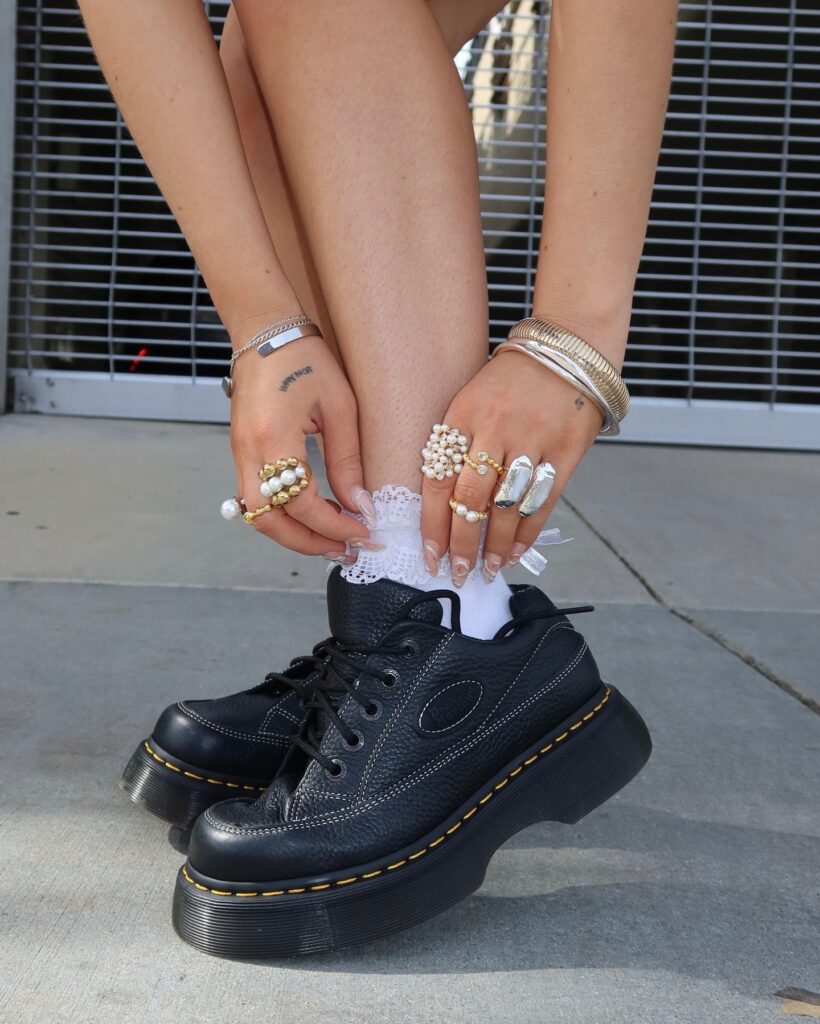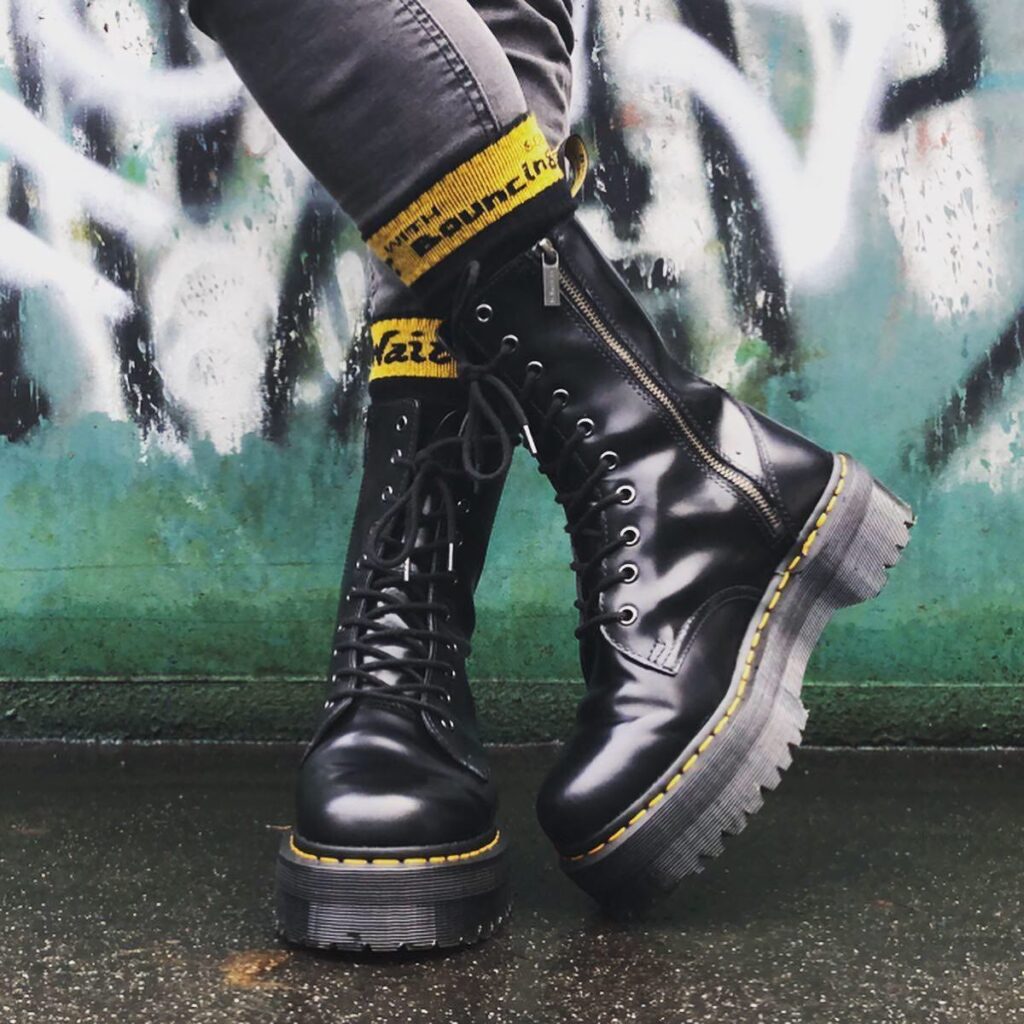Sole of Rebellion: How Dr. Martens Walked Into Global Icon Status Through Subculture and Strategy

Sole of Rebellion: How Dr. Martens Walked Into Global Icon Status Through Subculture and Strategy. Dr. Martens’ journey from a modest orthopedic work boot to a global symbol of counterculture is one of the most distinctive transformations in fashion history. Founded on practical design and catapulted by strategic cultural alignment, the brand exemplifies how authenticity, resilience, and clever positioning can redefine a product and elevate it to icon status.
Origins: A German Innovation Finds British Grit
The story of Dr. Martens begins in post-WWII Germany. In 1945, Dr. Klaus Märtens, a German army doctor, developed an air-cushioned sole to aid his recovery from a broken foot. The soft sole offered more comfort than traditional leather soles, and by 1947, Märtens and his partner, Dr. Herbert Funck, began producing shoes using discarded rubber from Luftwaffe airfields.
The shoes gained popularity among older women, but it wasn’t until 1959—when the design was licensed to British bootmaker R. Griggs Group Ltd—that the modern Dr. Martens boot was born. Griggs Anglicized the name to Dr. Martens, reshaped the silhouette, added the yellow stitching, grooved sole, and black-and-yellow heel loop, launching the now-iconic 1460 boot on April 1, 1960.

A Working-Class Staple
Initially, Dr. Martens were embraced by British postal workers, factory employees, and police officers—valued for durability and comfort. The boots were not fashion items; they were functional and affordable. This utilitarian authenticity laid the groundwork for the brand’s later adoption by youth subcultures seeking products that reflected anti-establishment values.
Cultural Alignment: Subcultures Make the Brand
In the late 1960s and into the 70s, Dr. Martens became popular with skinheads, who admired the boot’s working-class roots. Later, punks, goths, and grunge icons adopted the boots as symbols of rebellion and identity. Musicians like The Clash, Pete Townshend, and Kurt Cobain helped cement the brand’s place in pop culture.
Crucially, this adoption wasn’t the result of calculated marketing—it was organic. But Dr. Martens’ leadership recognized the brand’s cultural capital and eventually leaned into it. They allowed the product to remain a blank canvas—unbranded on the upper and adaptable to various personal styles. This flexibility made the boot a timeless symbol of self-expression.

Strategic Marketing and Resilience in the 21st Century
The 2000s were challenging for Dr. Martens. Sales plummeted, and in 2003, the company closed its UK manufacturing plant, moving production to Asia to reduce costs. It was a critical turning point. Instead of folding, the brand regrouped, focusing on its heritage and storytelling. The company relaunched “Made in England” limited collections from its original Northamptonshire factory, reinforcing its legacy.
Dr. Martens also leaned heavily into content-driven marketing. The brand launched initiatives like the “Stand for Something” campaign, celebrating individuality and giving voice to loyal fans. Collaborations with designers and artists like Yohji Yamamoto and Supreme helped connect Dr. Martens with new audiences without alienating its base.
In 2013, private equity firm Permira acquired the brand, injecting capital and accelerating global expansion. By the time Dr. Martens went public on the London Stock Exchange in 2021, the brand had grown significantly in value, driven by direct-to-consumer e-commerce and international market penetration.
Key Lessons for Entrepreneurs
1. Let Your Product Speak: Dr. Martens didn’t become cool through branding alone. It was the product’s authenticity and utility that drew attention. Founders should prioritize creating products that genuinely solve problems or resonate deeply.
2. Embrace Organic Growth: The brand became a cultural symbol not through pushy marketing but by being embraced by the right communities. Entrepreneurs should listen to their audience and nurture organic advocacy.
3. Evolve Without Selling Out: When Dr. Martens faced collapse, it modernized operations and retail strategy without compromising on heritage. Balance is key—grow with the times but keep your brand’s soul intact.
4. Heritage Is an Asset: Reviving its British-made lines and highlighting its origins allowed Dr. Martens to command premium status while staying rooted. Entrepreneurs should not overlook the storytelling power of their origin.

Walking Forward: A Brand with Backbone
Today, Dr. Martens is more than a footwear brand; it’s a cultural artifact. Its ability to navigate changing trends while remaining a beacon of individuality has secured its relevance across decades. For aspiring entrepreneurs, the Dr. Martens story is proof that with authenticity, resilience, and a deep understanding of your audience, even a work boot can become a global fashion icon.


